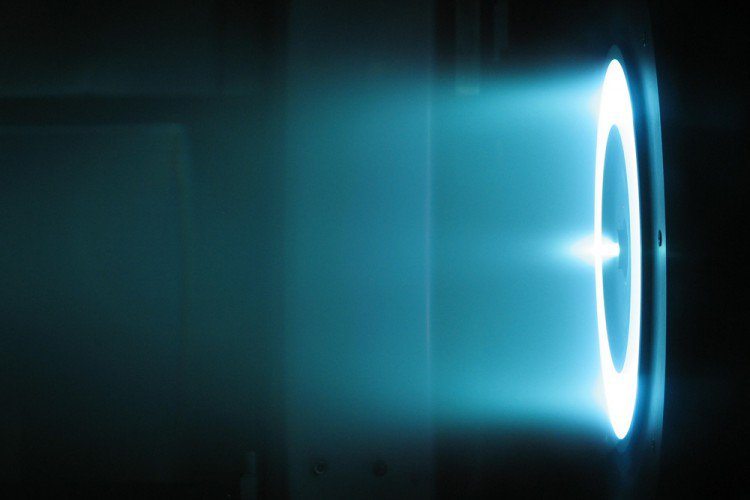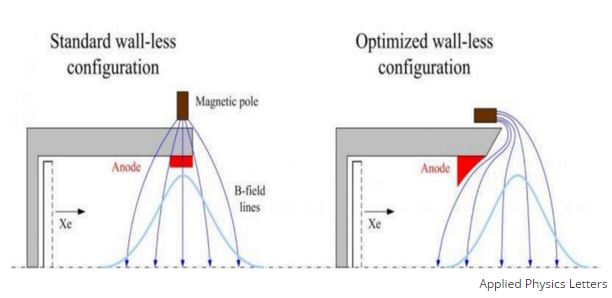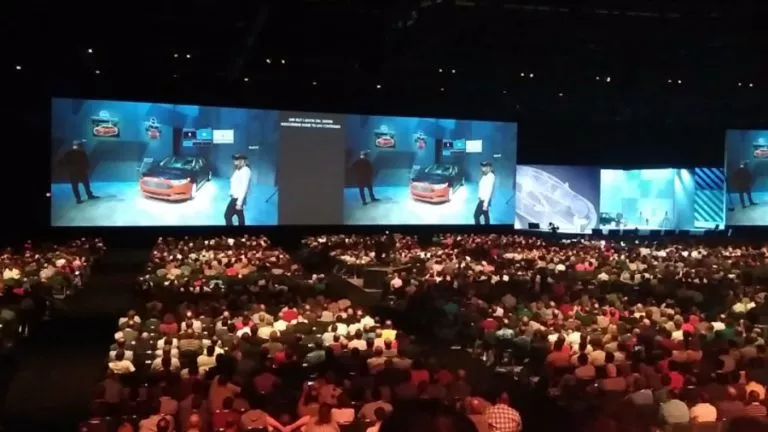Wall-Less Hall Thrusters Will Take Us to Mars Without Refueling

 Short Bytes: French physicists have figured out a way to optimize the hall thrusters to make the journey to Mars with 100 million times less fuel than required conventionally. The scientists have developed a wall-less hall thruster design which could bolster a deep space manned mission.
Short Bytes: French physicists have figured out a way to optimize the hall thrusters to make the journey to Mars with 100 million times less fuel than required conventionally. The scientists have developed a wall-less hall thruster design which could bolster a deep space manned mission.
The researchers in France are working on the plasma engine known as “hall thruster” which they claim would take humans to Mars with 100 million times less fuel compared to the current conventional chemical rockets. Hall Thrusters are advanced electric rocket propellers that use a high-energy plasma stream (72,420 km/h) to drive the spacecraft into orbit.
The Hall Thrusters have been in use since 1971 but never been taken into account for a manned mission. The reason being the lifespan of these thrusters, which is just about 10,000 operation hours. The shortest space mission requires more than 50,000 operational hours.
Now, hall thrusters provide very efficient spaceflight, so the physicists at French National Center for Scientific Research had focussed towards increasing the lifespan of these propellers and finally figured out a way – wall-less thrusters.
But, before getting into wall-less hall thrusters let us know the gist of how regular hall thrusters work. The hall thrusters propel a rocket by creating a repulsion effect between the ions in the low-pressure plasma inside high-energy magnetic and electric fields.
The thrusters trap the high-speed electrons (blasted through the hollow cathode) in their strong magnetic field and then inject a small amount of propellant, usually xenon gas into the field. Now in the magnetic field, xenon gets ionized and is repelled outwards by experiencing a positive electric force, thus, creating an ion beam. As the xenon ions come out, they impart a thrust to the electron cloud which is still inside the magnetic field (Newton’s third law). This force by electrons is then transferred to the magnetic circuit of the thruster which then propels the spaceship.
The thruster works great, but the reason for its short lifespan lies in the discharge channel wall which continuously gets bombarded with high energy ions causing the engine to depreciate faster than normal.
The Wall-Less concept of the French scientists removes the root cause of the problem, the discharge channel wall. Lead researcher Julien Vaudolon says,
After creating the first standard Wall-Less thruster which was a total failure due to its design problems, the researchers have figured out a new optimized Wall-less hall thrusters configuration. The red anode should be lined up on the wall emitting xenon. Instead, it’s in the magnetic field, allowing electrons to glom onto it, reducing performance, as explained on Gizmodo.
The red anode should be lined up on the wall emitting xenon. Instead, it’s in the magnetic field, allowing electrons to glom onto it, reducing performance, as explained on Gizmodo.
As the new technique evolves, the need for fuel will reduce drastically and space for important cargo or maybe humans would suffice. The new Wall-less hall thrusters could revolutionize the space missions and would make the interplanetary trips more like a subway!!
[adinserter block=”12″][adinserter block=”13″]




